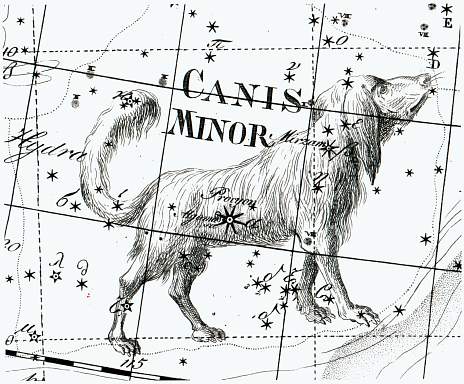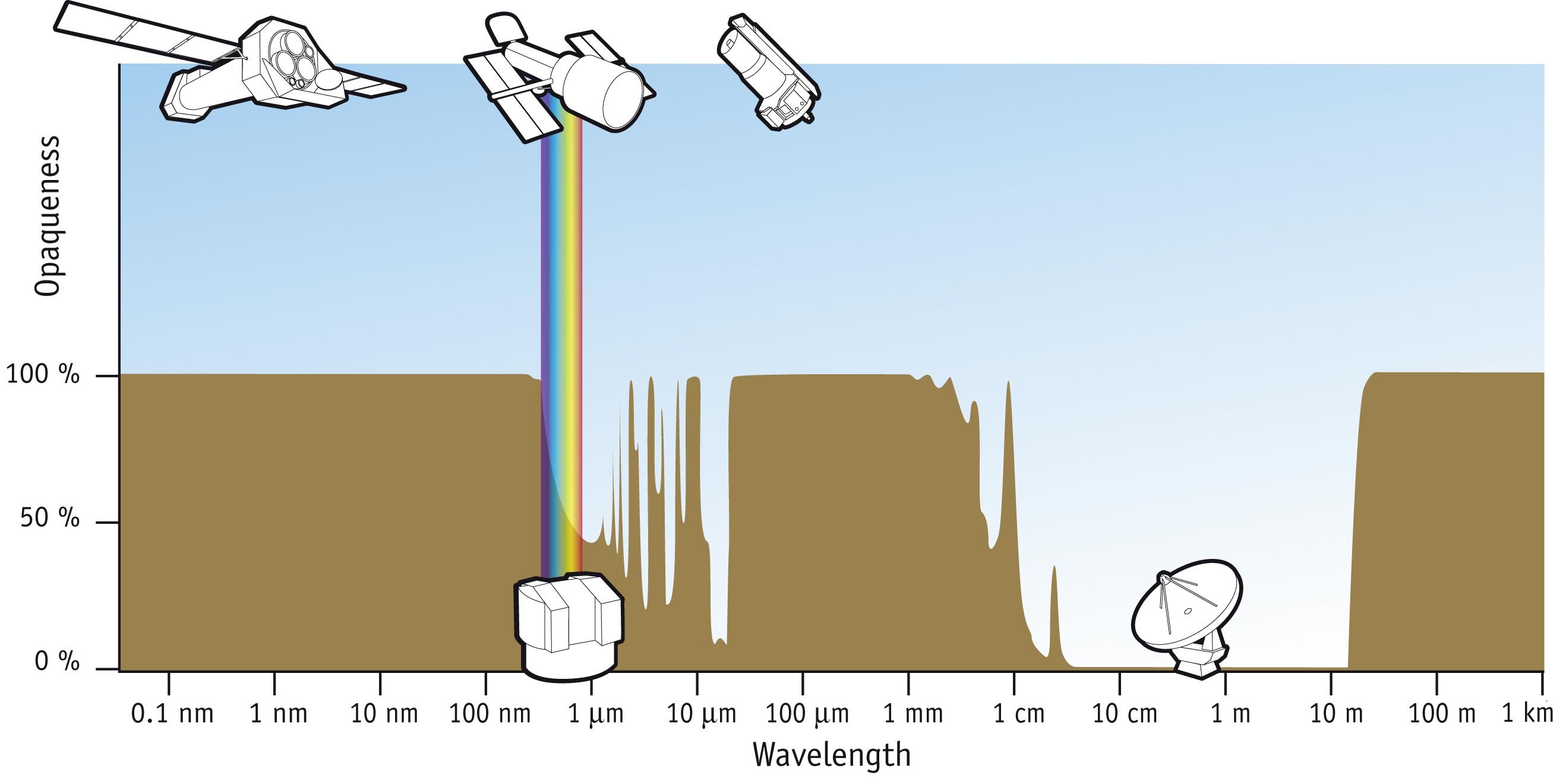|
YZ Canis Minoris
YZ Canis Minoris is a red-hued star in the equatorial constellation of Canis Minor. With an apparent visual magnitude of 11.15, it is much too faint to be viewed with the naked eye. The distance to YZ CMi can be estimated from its annual parallax shift of , yielding a value of 19.5 light years. Presently the star is moving further away with a heliocentric radial velocity of +26.5 km/s. It made its closest approach some 162,000 years ago when it made perihelion passage at a distance of . YZ CMi is a potential member of the Beta Pictoris moving group. This is a red dwarf star, or M-type main-sequence star, with a stellar classification of M5 V. It is a flare star A flare star is a variable star that can undergo unpredictable dramatic increases in brightness for a few minutes. It is believed that the flares on flare stars are analogous to solar flares in that they are due to magnetic reconnection, the magne ..., so called due to its stellar flares being mo ... [...More Info...] [...Related Items...] OR: [Wikipedia] [Google] [Baidu] |
Canis Minor
Canis Minor is a small constellation in the Celestial sphere, northern celestial hemisphere. In the second century, it was included as an Asterism (astronomy), asterism, or pattern, of two stars in Ptolemy's 48 constellations, and it is counted among the Lists of constellations, 88 modern constellations. Its name is Latin for "lesser dog", in contrast to Canis Major, the "greater dog"; both figures are commonly represented as following the constellation of Orion (constellation), Orion the hunter. Canis Minor contains only two stars brighter than the fourth apparent magnitude, magnitude, Procyon (Alpha Canis Minoris), with a magnitude of 0.34, and Gomeisa (Beta Canis Minoris), with a magnitude of 2.9. The constellation's dimmer stars were noted by Johann Bayer, who named eight stars including Alpha and Beta, and John Flamsteed, who numbered fourteen. Procyon is the List of brightest stars, eighth-brightest star in the night sky, as well as one of the List of nearest stars, close ... [...More Info...] [...Related Items...] OR: [Wikipedia] [Google] [Baidu] |
M-type Main-sequence Star
A red dwarf is the smallest kind of star on the main sequence. Red dwarfs are by far the most common type of fusing star in the Milky Way, at least in the neighborhood of the Sun. However, due to their low luminosity, individual red dwarfs are not easily observed. Not one star that fits the stricter definitions of a red dwarf is visible to the naked eye. Proxima Centauri, the star nearest to the Sun, is a red dwarf, as are fifty of the sixty nearest stars. According to some estimates, red dwarfs make up three-quarters of the fusing stars in the Milky Way. The coolest red dwarfs near the Sun have a surface temperature of about and the smallest have radii about 9% solar radius, that of the Sun, with masses about 7.5% solar mass, that of the Sun. These red dwarfs have Stellar classification#Spectral types, spectral types of L0 to L2. There is some overlap with the properties of brown dwarfs, since the most massive brown dwarfs at lower metallicity can be as hot as and have late ... [...More Info...] [...Related Items...] OR: [Wikipedia] [Google] [Baidu] |
Gliese And GJ Objects
Gliese may refer to: * Rochus Gliese (1891—1978), a German actor, director, production designer, and art director * Wilhelm Gliese (1915–1993), a German astronomer, best known for the Gliese Catalogue of Nearby Stars * Gliese Catalogue of Nearby Stars, a modern star catalog of stars located within 25 parsecs of the Earth ** Any of the stars in this catalog; see :Gliese and GJ objects {{Disambiguation, surname ... [...More Info...] [...Related Items...] OR: [Wikipedia] [Google] [Baidu] |
2MASS Objects
Mass is an intrinsic property of a body. It was traditionally believed to be related to the quantity of matter in a body, until the discovery of the atom and particle physics. It was found that different atoms and different elementary particles, theoretically with the same amount of matter, have nonetheless different masses. Mass in modern physics has multiple definitions which are conceptually distinct, but physically equivalent. Mass can be experimentally defined as a measure of the body's inertia, meaning the resistance to acceleration (change of velocity) when a net force is applied. The object's mass also determines the strength of its gravitational attraction to other bodies. The SI base unit of mass is the kilogram (kg). In physics, mass is not the same as weight, even though mass is often determined by measuring the object's weight using a spring scale, rather than balance scale comparing it directly with known masses. An object on the Moon would weigh ... [...More Info...] [...Related Items...] OR: [Wikipedia] [Google] [Baidu] |
Flare Stars
A flare star is a variable star that can undergo unpredictable dramatic increases in brightness for a few minutes. It is believed that the flares on flare stars are analogous to solar flares in that they are due to the magnetic energy stored in the stars' atmospheres. The brightness increase is across the spectrum, from X-rays to radio waves. Flare activity among late-type stars was first reported by A. van Maanen in 1945, for WX Ursae Majoris and YZ Canis Minoris. However, the best-known flare star is UV Ceti, first observed to flare in 1948. Today similar flare stars are classified as UV Ceti type variable stars (using the abbreviation UV) in variable star catalogs such as the General Catalogue of Variable Stars. Most flare stars are dim red dwarfs, although recent research indicates that less massive brown dwarfs might also be capable of flaring. The more massive RS Canum Venaticorum variables (RS CVn) are also known to flare, but it is understood that these flares are ind ... [...More Info...] [...Related Items...] OR: [Wikipedia] [Google] [Baidu] |
M-type Main-sequence Stars
Type M or M type may refer to: Science and technology * Type M, a xD-Picture Card * Type M, a name for the 15 amp BS 546 electrical plug * Vaio Type M, a kind of Vaio computer from Sony * M-type asteroid * m-type filter, an electronic filter * M-type star * M-types, an implementation of inductive type In type theory, a system has inductive types if it has facilities for creating a new type from constants and functions that create terms of that type. The feature serves a role similar to data structures in a programming language and allows a ty ... Other uses * Audi Type M, a 1920s car * Beretta 92FS Compact Type M, a pistol * MG M-type, a sports car See also * M class (other) * Class M (other) {{disambiguation ... [...More Info...] [...Related Items...] OR: [Wikipedia] [Google] [Baidu] |
Stellar Corona
In astronomy, a corona (: coronas or coronae) is the outermost layer of a star's Stellar atmosphere, atmosphere. It is a hot but relatively luminosity, dim region of Plasma (physics), plasma populated by intermittent coronal structures such as solar prominence, prominences, coronal loops, and helmet streamers. The Sun's corona lies above the chromosphere and extends millions of kilometres into outer space. Coronal light is typically obscured by diffuse sky radiation and Glare (vision), glare from the solar disk, but can be easily seen by the naked eye during a total solar eclipse or with a specialized coronagraph. Spectroscopic measurements indicate strong ionization in the corona and a plasma temperature in excess of , much hotter than the surface of the Sun, known as the photosphere. is, in turn, derived . History In 1724, French-Italian astronomer Giacomo F. Maraldi recognized that the aura visible during a solar eclipse belongs to the Sun, not to the Moon. In 1809, Span ... [...More Info...] [...Related Items...] OR: [Wikipedia] [Google] [Baidu] |
X-ray Astronomy
X-ray astronomy is an observational branch of astronomy which deals with the study of X-ray observation and detection from astronomical objects. X-radiation is absorbed by the Earth's atmosphere, so instruments to detect X-rays must be taken to high altitude by Balloon-borne telescope, balloons, sounding rockets, and X-ray astronomy satellite, satellites. X-ray astronomy uses a type of space telescope that can see x-ray radiation which standard optical telescopes, such as the Mauna Kea Observatories, cannot. X-ray generation, X-ray emission is expected from astronomical objects that contain extremely hot gases at temperatures from about a million kelvin (K) to hundreds of millions of kelvin (MK). Moreover, the maintenance of the E-layer of ionized gas high in the Earth's thermosphere also suggested a strong extraterrestrial source of X-rays. Although theory predicted that the Sun and the stars would be prominent X-ray sources, there was no way to verify this because Earth's atmo ... [...More Info...] [...Related Items...] OR: [Wikipedia] [Google] [Baidu] |
Flare Star
A flare star is a variable star that can undergo unpredictable dramatic increases in brightness for a few minutes. It is believed that the flares on flare stars are analogous to solar flares in that they are due to magnetic reconnection, the magnetic energy stored in the stars' atmospheres. The brightness increase is across the Electromagnetic spectrum, spectrum, from X-rays to radio waves. Flare activity among late-type stars was first reported by Adriaan van Maanen, A. van Maanen in 1945, for Gliese 412, WX Ursae Majoris and YZ Canis Minoris. However, the best-known flare star is UV Ceti, first observed to flare in 1948. Today similar flare stars are classified as UV Ceti type variable stars (using the abbreviation UV) in variable star catalogs such as the General Catalogue of Variable Stars. Most flare stars are dim red dwarfs, although recent research indicates that less massive brown dwarfs might also be capable of flaring. The more massive RS Canum Venaticorum variables (RS ... [...More Info...] [...Related Items...] OR: [Wikipedia] [Google] [Baidu] |
Stellar Classification
In astronomy, stellar classification is the classification of stars based on their stellar spectrum, spectral characteristics. Electromagnetic radiation from the star is analyzed by splitting it with a Prism (optics), prism or diffraction grating into a spectrum exhibiting the Continuum (spectrum), rainbow of colors interspersed with spectral lines. Each line indicates a particular chemical element or molecule, with the line strength indicating the abundance of that element. The strengths of the different spectral lines vary mainly due to the temperature of the photosphere, although in some cases there are true abundance differences. The ''spectral class'' of a star is a short code primarily summarizing the ionization state, giving an objective measure of the photosphere's temperature. Most stars are currently classified under the Morgan–Keenan (MK) system using the letters ''O'', ''B'', ''A'', ''F'', ''G'', ''K'', and ''M'', a sequence from the hottest (''O'' type) to the cool ... [...More Info...] [...Related Items...] OR: [Wikipedia] [Google] [Baidu] |
Red Dwarf
A red dwarf is the smallest kind of star on the main sequence. Red dwarfs are by far the most common type of fusing star in the Milky Way, at least in the neighborhood of the Sun. However, due to their low luminosity, individual red dwarfs are not easily observed. Not one star that fits the stricter definitions of a red dwarf is visible to the naked eye. Proxima Centauri, the star nearest to the Sun, is a red dwarf, as are fifty of the sixty nearest stars. According to some estimates, red dwarfs make up three-quarters of the fusing stars in the Milky Way. The coolest red dwarfs near the Sun have a surface temperature of about and the smallest have radii about 9% that of the Sun, with masses about 7.5% that of the Sun. These red dwarfs have spectral types of L0 to L2. There is some overlap with the properties of brown dwarfs, since the most massive brown dwarfs at lower metallicity can be as hot as and have late M spectral types. Definitions and usage of the term "red d ... [...More Info...] [...Related Items...] OR: [Wikipedia] [Google] [Baidu] |







